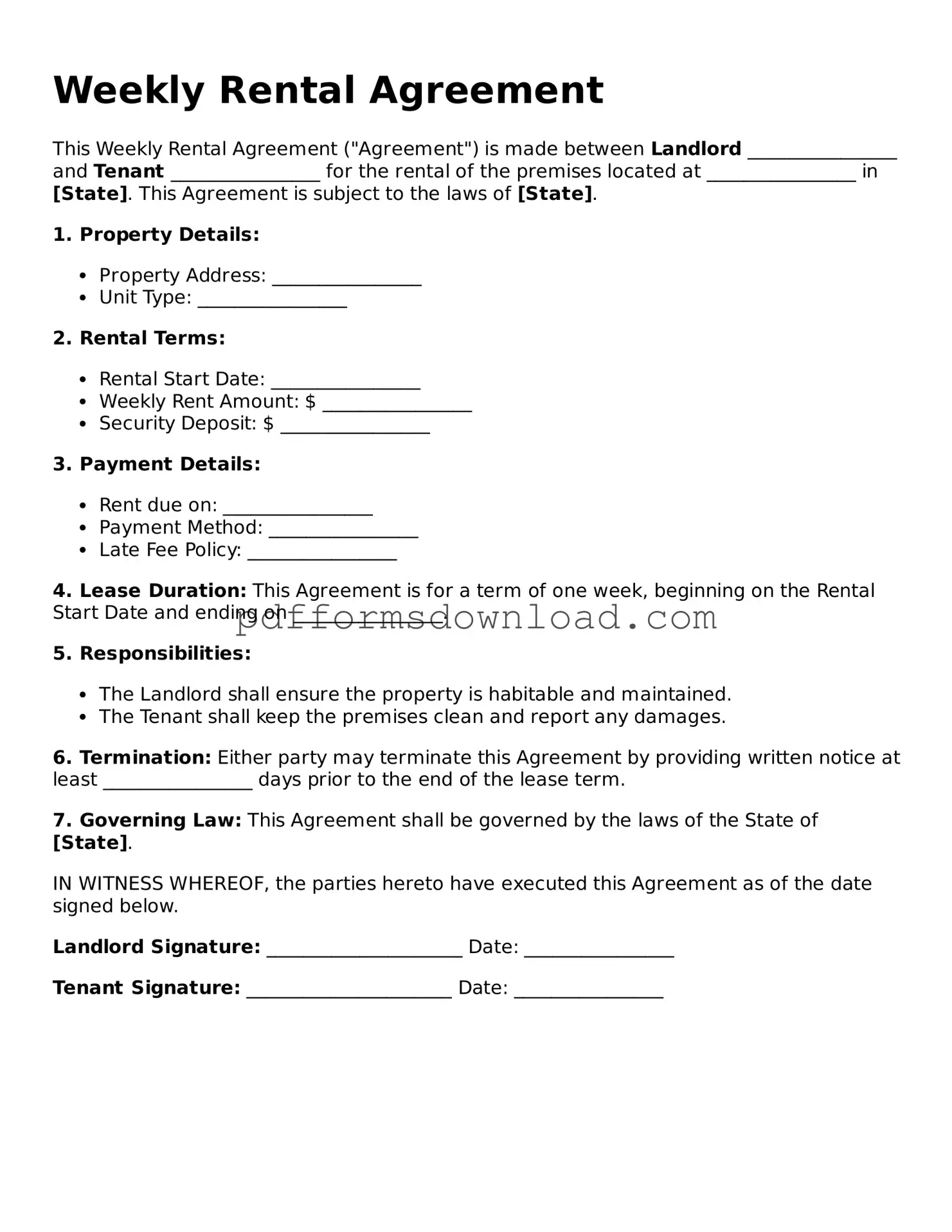What is a Weekly Rental Agreement?
A Weekly Rental Agreement is a legal document that outlines the terms and conditions under which a property is rented on a weekly basis. This agreement typically includes details such as rental amount, duration of the lease, responsibilities of both the landlord and tenant, and any rules or restrictions regarding the use of the property.
Who should use a Weekly Rental Agreement?
This agreement is suitable for landlords and tenants who prefer short-term rental arrangements. It is commonly used in situations such as vacation rentals, temporary housing, or for tenants who require flexibility in their living arrangements.
What are the key components of a Weekly Rental Agreement?
Key components often include the names of the parties involved, property address, rental amount, payment due dates, security deposit information, lease duration, maintenance responsibilities, and rules regarding pets, smoking, and guests. Clarity in these areas helps prevent misunderstandings.
How is the rental amount determined?
The rental amount is typically based on various factors, including the location of the property, market rates, property size, and amenities offered. Landlords may also consider the length of the rental period and any additional services provided to set a competitive price.
Can a Weekly Rental Agreement be renewed?
Yes, a Weekly Rental Agreement can be renewed. Both parties must agree to the renewal terms, which may involve adjusting the rental amount or updating any other conditions. It is important to document any changes in writing to avoid future disputes.
What happens if a tenant wants to terminate the agreement early?
If a tenant wishes to terminate the agreement early, they should refer to the terms outlined in the agreement. Most agreements will specify the notice period required for termination. Failure to comply with these terms may result in financial penalties or loss of the security deposit.
Is a security deposit required?
A security deposit is often required to cover potential damages or unpaid rent. The amount can vary but is typically equivalent to one week’s rent. The agreement should specify the conditions under which the deposit may be withheld or returned at the end of the rental period.
What are the responsibilities of the landlord and tenant?
The landlord is generally responsible for maintaining the property and ensuring it is habitable. This includes making necessary repairs and addressing safety concerns. Tenants are responsible for keeping the property clean, paying rent on time, and adhering to the rules set forth in the agreement.
Can the terms of the Weekly Rental Agreement be modified?
Yes, the terms can be modified, but both parties must agree to any changes. It is advisable to document any modifications in writing to ensure clarity and prevent disputes. Verbal agreements may not be enforceable, so written documentation is crucial.
